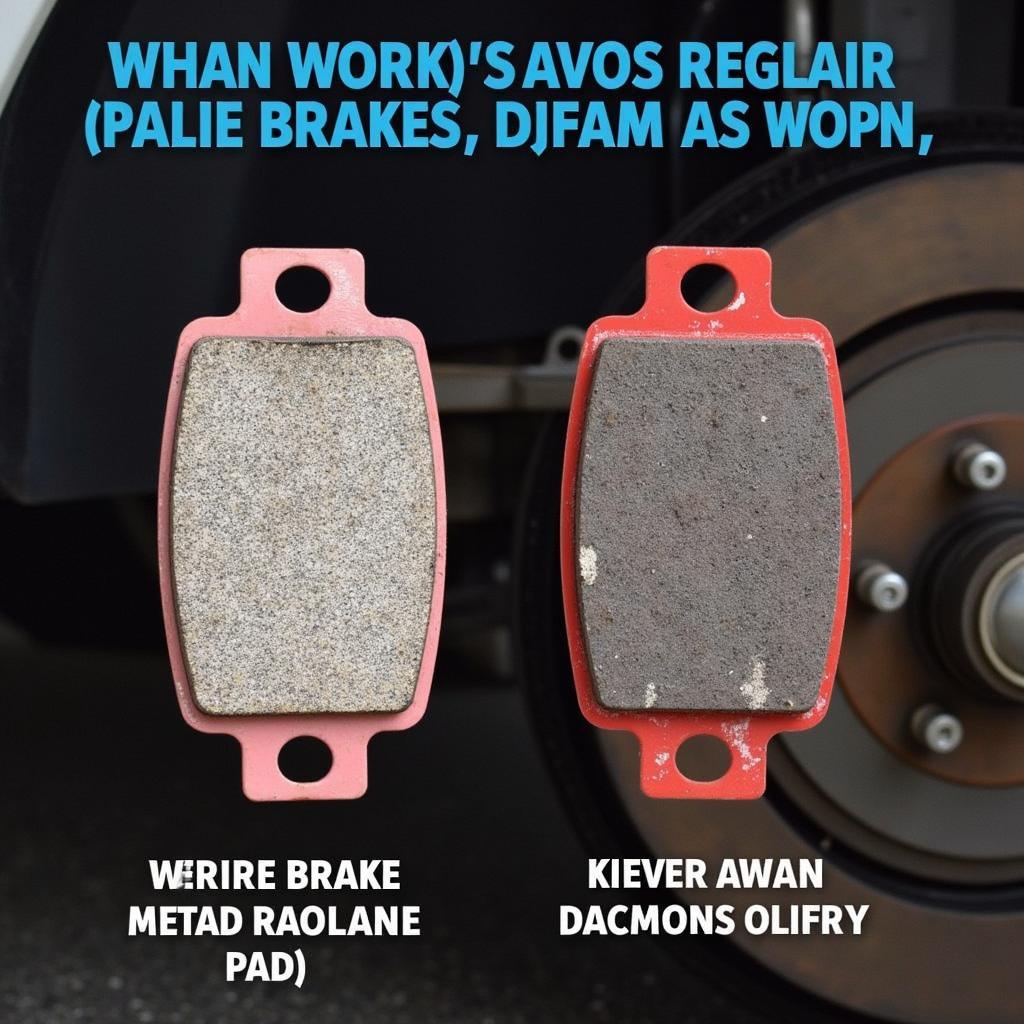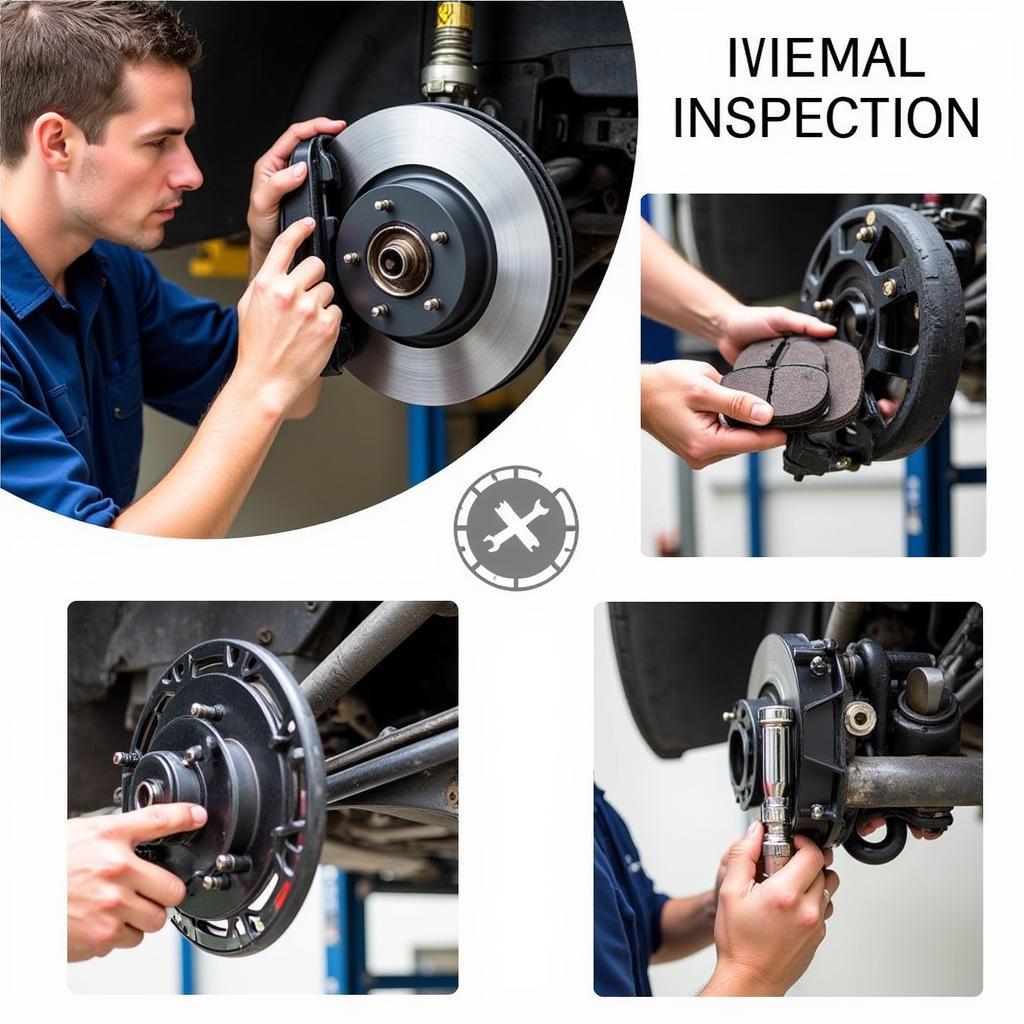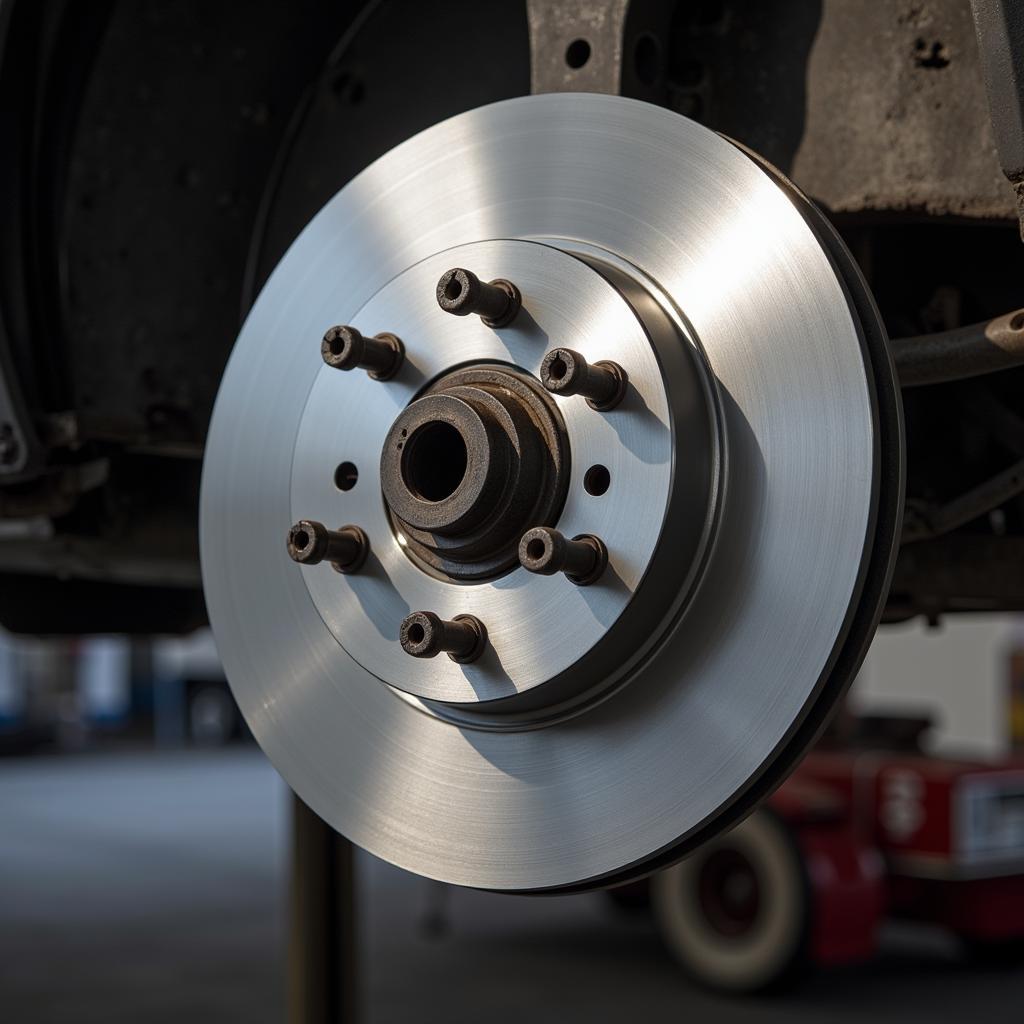Car Braking Problems can range from minor annoyances to serious safety hazards. Understanding the various causes and solutions is crucial for both car owners and mechanics. This guide provides a comprehensive overview of common braking issues, diagnostic techniques, and effective repair strategies.
Experiencing problems with your car’s brakes can be unnerving. From a soft brake pedal to unsettling noises, these issues demand immediate attention. Addressing brake problems promptly ensures both your safety and the longevity of your vehicle. Let’s explore the common causes of car braking problems and how to fix them.
Common Causes of Car Braking Problems
Several factors can contribute to car braking problems. Worn brake pads are a frequent culprit. As brake pads wear down, they lose their effectiveness, leading to decreased braking power. Another common cause is brake fluid leaks. Brake fluid is essential for transmitting hydraulic pressure, and leaks can compromise the entire braking system.
Brake rotors can also contribute to braking issues. Warped or damaged rotors can cause vibrations and pulsations when braking. Additionally, problems with the brake calipers, such as sticking pistons or seized components, can hinder proper braking performance.
Problems washing a car with front braking sensors can sometimes lead to unexpected braking issues.
A malfunctioning ABS (Anti-lock Braking System) can also be a source of braking problems. The ABS prevents wheel lockup during hard braking, and issues with this system can compromise its functionality. Finally, issues with the master cylinder, the central component of the hydraulic braking system, can also lead to a range of braking problems.
 Worn Brake Pads and Their Impact on Braking Performance
Worn Brake Pads and Their Impact on Braking Performance
Diagnosing Car Braking Problems
Identifying the specific cause of a braking problem requires careful diagnosis. Start by visually inspecting the brake components. Look for signs of wear and tear on the brake pads, rotors, and calipers. Check for leaks in the brake lines and hoses.
Next, test the brake pedal feel. A soft or spongy pedal can indicate air in the brake lines or a problem with the master cylinder. A pulsating pedal often suggests warped rotors. Listen for any unusual noises while braking. Squealing or grinding sounds usually point to worn brake pads.
Problems with cars often involve the braking system, and accurate diagnosis is essential.
More advanced diagnostic techniques, such as using a brake pressure gauge or scanning for trouble codes with an OBD-II scanner, can provide more detailed information about the braking system’s performance and identify potential electronic issues.
 Mechanic Inspecting Car Brake System Components
Mechanic Inspecting Car Brake System Components
Repairing Car Braking Problems
Once the cause of the braking problem has been identified, the appropriate repairs can be carried out. Replacing worn brake pads and rotors is a common repair. Addressing brake fluid leaks involves repairing or replacing the affected components. Repairing or replacing calipers and other brake system components may also be necessary.
Bleeding the brakes is crucial after any repair that involves opening the hydraulic system. This process removes air from the brake lines, restoring proper brake pedal feel and performance. If the ABS is malfunctioning, diagnosis and repair may require specialized equipment and expertise.
“Regular brake maintenance is essential for preventing serious problems,” says automotive expert, Robert Johnson, ASE Master Certified Technician. “A simple brake inspection can save you from costly repairs down the road.”
### Car Pulling Other Car Problem and Braking Issues
Sometimes, car pulling other car problem can be related to underlying braking issues, particularly if the pulling sensation occurs during braking. This might indicate uneven brake pressure distribution or a problem with one of the brake calipers.
Conclusion
Car braking problems can be effectively addressed through proper diagnosis and repair. Regular maintenance, including brake inspections and fluid changes, is crucial for preventing issues and ensuring optimal braking performance. Neglecting brake problems can lead to dangerous situations, so addressing them promptly is paramount. Remember, a well-maintained braking system is essential for your safety and the safety of others on the road. If you’re facing any car braking problems, don’t hesitate to contact AutoTipPro at +1 (641) 206-8880 or visit our office at 500 N St Mary’s St, San Antonio, TX 78205, United States. We’re here to help you get back on the road safely.
 Brand New Brake Rotor Ready for Installation
Brand New Brake Rotor Ready for Installation
FAQs
- How often should I have my brakes checked? It’s recommended to have your brakes inspected at least once a year or every 12,000 miles.
- What are the signs of worn brake pads? Squealing or grinding noises, a pulsating brake pedal, and reduced braking power are common signs.
- Can I drive with a brake fluid leak? No, it’s unsafe to drive with a brake fluid leak. Get it repaired immediately.
- What causes warped rotors? Overheating, excessive braking, and poor quality rotors can contribute to warping.
- How long does it take to replace brake pads? Typically, replacing brake pads takes about an hour or two.
- What is the difference between drum brakes and disc brakes? Disc brakes use calipers and rotors, while drum brakes use shoes and drums. Disc brakes offer better performance and heat dissipation.
- List of cars nissan transmission problems are common, but are brake problems also prevalent in Nissans? While Nissans may have certain transmission issues, brake problems are not particularly more common in this brand than in others. Regular maintenance is key for all vehicles.
“Remember, your brakes are your car’s most important safety feature,” adds Maria Sanchez, Certified Automotive Technician. “Don’t ignore any signs of trouble.”
Vermont used car problems can range from minor cosmetic issues to significant mechanical failures, including braking system problems. It’s always wise to thoroughly inspect a used car before purchase.





Leave a Reply